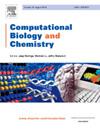咪唑衍生物选择性环氧化酶-2抑制剂的硅设计与分子动力学分析。
IF 2.6
4区 生物学
Q2 BIOLOGY
引用次数: 0
摘要
环氧化酶-2(COX-2)是炎症途径中的一种关键酶,是各种非甾体抗炎药(NSAIDs)和被称为 Coxibs 的选择性抑制剂的靶点。本研究的重点是开发新型咪唑衍生物作为 COX-2 抑制剂,利用结构-活性关系(SAR)方法提高结合亲和力和选择性。使用 Autodock Vina 进行了分子对接,发现化合物 5b、5d 和 5e 的结合能分别为 -6.928、-7.187 和 -7.244 kJ/mol。利用 GROMACS 进行的分子动力学模拟深入揭示了蛋白质配体复合物的稳定性和构象变化。采用 RMSD、RMSF、Rg、SASA 和氢键分析等关键指标来评估相互作用。采用 MMPBSA 方法估算了抑制剂的结合自由能,结果表明化合物 5b(N-[(3-苄基-2-甲磺酰基咪唑-4-基)甲基]-4-甲氧基苯胺)的结合能最低,为 -162.014 kcal/mol。ADMET 分析表明,化合物 5b 具有最有利的药代动力学特性和安全性。总之,这项研究强调了这些新型咪唑衍生物作为有效 COX-2 抑制剂的潜力,其中化合物 5b 是最有希望进一步开发的候选化合物。本文章由计算机程序翻译,如有差异,请以英文原文为准。
In Silico design and molecular dynamics analysis of imidazole derivatives as selective cyclooxygenase-2 inhibitors
Cyclooxygenase-2 (COX-2), a key enzyme in the inflammatory pathway, is the target for various nonsteroidal anti-inflammatory drugs (NSAIDs) and selective inhibitors known as coxibs. This study focuses on the development of novel imidazole derivatives as COX-2 inhibitors, utilizing a Structure-Activity Relationship (SAR) approach to enhance binding affinity and selectivity. Molecular docking was performed using Autodock Vina, revealing binding energies of −6.928, −7.187, and −7.244 kJ/mol for compounds 5b, 5d, and 5e, respectively. Molecular dynamics simulations using GROMACS provided insights into the stability and conformational changes of the protein-ligand complexes. Key metrics such as RMSD, RMSF, Rg, SASA, and hydrogen bond analysis were employed to assess the interactions. The binding free energy of the inhibitors was estimated using the MMPBSA method, highlighting compound 5b (N-[(3-benzyl-2-methylsulfonylimidazol-4-yl)methyl]-4-methoxyaniline) with the lowest binding energy of −162.014 kcal/mol. ADMET analysis revealed that compound 5b exhibited the most favorable pharmacokinetic properties and safety profile. Overall, this investigation underscores the potential of these novel imidazole derivatives as effective COX-2 inhibitors, with compound 5b emerging as the most promising candidate for further development.
求助全文
通过发布文献求助,成功后即可免费获取论文全文。
去求助
来源期刊

Computational Biology and Chemistry
生物-计算机:跨学科应用
CiteScore
6.10
自引率
3.20%
发文量
142
审稿时长
24 days
期刊介绍:
Computational Biology and Chemistry publishes original research papers and review articles in all areas of computational life sciences. High quality research contributions with a major computational component in the areas of nucleic acid and protein sequence research, molecular evolution, molecular genetics (functional genomics and proteomics), theory and practice of either biology-specific or chemical-biology-specific modeling, and structural biology of nucleic acids and proteins are particularly welcome. Exceptionally high quality research work in bioinformatics, systems biology, ecology, computational pharmacology, metabolism, biomedical engineering, epidemiology, and statistical genetics will also be considered.
Given their inherent uncertainty, protein modeling and molecular docking studies should be thoroughly validated. In the absence of experimental results for validation, the use of molecular dynamics simulations along with detailed free energy calculations, for example, should be used as complementary techniques to support the major conclusions. Submissions of premature modeling exercises without additional biological insights will not be considered.
Review articles will generally be commissioned by the editors and should not be submitted to the journal without explicit invitation. However prospective authors are welcome to send a brief (one to three pages) synopsis, which will be evaluated by the editors.
 求助内容:
求助内容: 应助结果提醒方式:
应助结果提醒方式:


